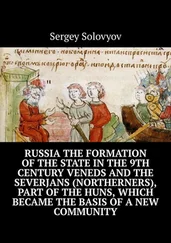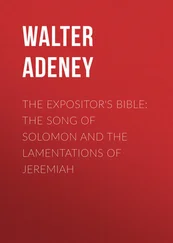Charles Addison - The History of the Knights Templars, the Temple Church, and the Temple
Здесь есть возможность читать онлайн «Charles Addison - The History of the Knights Templars, the Temple Church, and the Temple» — ознакомительный отрывок электронной книги совершенно бесплатно, а после прочтения отрывка купить полную версию. В некоторых случаях можно слушать аудио, скачать через торрент в формате fb2 и присутствует краткое содержание. Жанр: foreign_antique, foreign_prose, на английском языке. Описание произведения, (предисловие) а так же отзывы посетителей доступны на портале библиотеки ЛибКат.
- Название:The History of the Knights Templars, the Temple Church, and the Temple
- Автор:
- Жанр:
- Год:неизвестен
- ISBN:нет данных
- Рейтинг книги:5 / 5. Голосов: 1
-
Избранное:Добавить в избранное
- Отзывы:
-
Ваша оценка:
- 100
- 1
- 2
- 3
- 4
- 5
The History of the Knights Templars, the Temple Church, and the Temple: краткое содержание, описание и аннотация
Предлагаем к чтению аннотацию, описание, краткое содержание или предисловие (зависит от того, что написал сам автор книги «The History of the Knights Templars, the Temple Church, and the Temple»). Если вы не нашли необходимую информацию о книге — напишите в комментариях, мы постараемся отыскать её.
The History of the Knights Templars, the Temple Church, and the Temple — читать онлайн ознакомительный отрывок
Ниже представлен текст книги, разбитый по страницам. Система сохранения места последней прочитанной страницы, позволяет с удобством читать онлайн бесплатно книгу «The History of the Knights Templars, the Temple Church, and the Temple», без необходимости каждый раз заново искать на чём Вы остановились. Поставьте закладку, и сможете в любой момент перейти на страницу, на которой закончили чтение.
Интервал:
Закладка:
The holy abbot thus pursues his comparison between the soldier of the world and the soldier of Christ – the secular and the religious warrior.
“As often as thou who wagest a secular warfare marchest forth to battle, it is greatly to be feared lest when thou slayest thine enemy in the body, he should destroy thee in the spirit, or lest peradventure thou shouldst be at once slain by him both in body and soul. From the disposition of the heart, indeed, not by the event of the fight, is to be estimated either the jeopardy or the victory of the Christian. If, fighting with the desire of killing another, thou shouldest chance to get killed thyself, thou diest a man-slayer; if, on the other hand, thou prevailest, and through a desire of conquest or revenge killest a man, thou livest a man-slayer… O unfortunate victory, when in overcoming thine adversary thou fallest into sin, and anger or pride having the mastery over thee, in vain thou gloriest over the vanquished…
“What, therefore, is the fruit of this secular, I will not say ‘ militia ,’ but ‘ malitia ,’ if the slayer committeth a deadly sin, and the slain perisheth eternally? Verily, to use the words of the apostle, he that ploweth should plow in hope, and he that thresheth should be partaker of his hope. Whence, therefore, O soldiers, cometh this so stupendous error? What insufferable madness is this – to wage war with so great cost and labour, but with no pay except either death or crime? Ye cover your horses with silken trappings, and I know not how much fine cloth hangs pendent from your coats of mail. Ye paint your spears, shields, and saddles; your bridles and spurs are adorned on all sides with gold, and silver, and gems, and with all this pomp, with a shameful fury and a reckless insensibility, ye rush on to death. Are these military ensigns, or are they not rather the garnishments of women? Can it happen that the sharp-pointed sword of the enemy will respect gold, will it spare gems, will it be unable to penetrate the silken garment? Lastly, as ye yourselves have often experienced, three things are indispensably necessary to the success of the soldier; he must, for example, be bold, active, and circumspect; quick in running, prompt in striking; ye, however, to the disgust of the eye, nourish your hair after the manner of women, ye gather around your footsteps long and flowing vestures, ye bury up your delicate and tender hands in ample and wide-spreading sleeves. Among you indeed, nought provoketh war or awakeneth strife, but either an irrational impulse of anger, or an insane lust of glory, or the covetous desire of possessing another man’s lands and possessions. In such causes it is neither safe to slay nor to be slain…
III. “But the soldiers of Christ indeed securely fight the battles of their Lord, in no wise fearing sin either from the slaughter of the enemy, or danger from their own death. When indeed death is to be given or received for Christ, it has nought of crime in it, but much of glory…
“And now for an example, or to the confusion of our soldiers fighting not manifestly for God but for the devil, we will briefly display the mode of life of the Knights of Christ, such as it is in the field and in the convent, by which means it will be made plainly manifest to what extent the soldiery of God and the soldiery of the WORLD differ from one another… The soldiers of Christ live together in common in an agreeable but frugal manner, without wives and without children; and that nothing may be wanting to evangelical perfection, they dwell together without property of any kind, 27 27 i. e. Without any separate property.
in one house, under one rule, careful to preserve the unity of the spirit in the bond of peace. You may say, that to the whole multitude there is but one heart and one soul, as each one in no respect followeth after his own will or desire, but is diligent to do the will of the Master. They are never idle nor rambling abroad, but when they are not in the field, that they may not eat their bread in idleness, they are fitting and repairing their armour and their clothing, or employing themselves in such occupations as the will of the Master requireth, or their common necessities render expedient. Among them there is no distinction of persons; respect is paid to the best and most virtuous, not the most noble. They participate in each other’s honour, they bear one another’s burthens, that they may fulfil the law of Christ. An insolent expression, a useless undertaking, immoderate laughter, the least murmur or whispering, if found out, passeth not without severe rebuke. They detest cards and dice, they shun the sports of the field, and take no delight in that ludicrous catching of birds, (hawking,) which men are wont to indulge in. Jesters, and soothsayers, and storytellers, scurrilous songs, shows and games, they contemptuously despise and abominate as vanities and mad follies. They cut their hair, knowing that, according to the apostle, it is not seemly in a man to have long hair. They are never combed, seldom washed, but appear rather with rough neglected hair, foul with dust, and with skins browned by the sun and their coats of mail.
“Moreover, on the approach of battle they fortify themselves with faith within, and with steel without, and not with gold, so that, armed and not adorned, they may strike terror into the enemy, rather than awaken his lust of plunder. They strive earnestly to possess strong and swift horses, but not garnished with ornaments or decked with trappings, thinking of battle and of victory, and not of pomp and show, and studying to inspire fear rather than admiration…
“Such hath God chosen for his own, and hath collected together as his ministers from the ends of the earth, from among the bravest of Israel, who indeed vigilantly and faithfully guard the holy sepulchre, all armed with the sword, and most learned in the art of war…”
“There is indeed a Temple at Jerusalem in which they dwell together, unequal, it is true, as a building, to that ancient and most famous one of Solomon, but not inferior in glory. For truly, the entire magnificence of that consisted in corrupt things, in gold and silver, in carved stone, and in a variety of woods; but the whole beauty of this resteth in the adornment of an agreeable conversation, in the godly devotion of its inmates, and their beautifully-ordered mode of life. That was admired for its various external beauties, this is venerated for its different virtues and sacred actions, as becomes the sanctity of the house of God, who delighteth not so much in polished marbles as in well-ordered behaviour, and regardeth pure minds more than gilded walls. The face likewise of this Temple is adorned with arms, not with gems, and the wall, instead of the ancient golden chapiters, is covered around with pendent shields. Instead of the ancient candelabra, censers, and lavers, the house is on all sides furnished with bridles, saddles, and lances, all which plainly demonstrate that the soldiers burn with the same zeal for the house of God, as that which formerly animated their great leader, when, vehemently enraged, he entered into the Temple, and with that most sacred hand, armed not with steel, but with a scourge which he had made of small thongs, drove out the merchants, poured out the changers’ money, and overthrew the tables of them that sold doves; most indignantly condemning the pollution of the house of prayer, by the making of it a place of merchandize.”
“The devout army of Christ, therefore, earnestly incited by the example of its king, thinking indeed that the holy places are much more impiously and insufferably polluted by the infidels than when defiled by merchants, abide in the holy house with horses and with arms, so that from that, as well as all the other sacred places, all filthy and diabolical madness of infidelity being driven out, they may occupy themselves by day and by night in honourable and useful offices. They emulously honour the Temple of God with sedulous and sincere oblations, offering sacrifices therein with constant devotion, not indeed of the flesh of cattle after the manner of the ancients, but peaceful sacrifices, brotherly love, devout obedience, voluntary poverty.”
Читать дальшеИнтервал:
Закладка:
Похожие книги на «The History of the Knights Templars, the Temple Church, and the Temple»
Представляем Вашему вниманию похожие книги на «The History of the Knights Templars, the Temple Church, and the Temple» списком для выбора. Мы отобрали схожую по названию и смыслу литературу в надежде предоставить читателям больше вариантов отыскать новые, интересные, ещё непрочитанные произведения.
Обсуждение, отзывы о книге «The History of the Knights Templars, the Temple Church, and the Temple» и просто собственные мнения читателей. Оставьте ваши комментарии, напишите, что Вы думаете о произведении, его смысле или главных героях. Укажите что конкретно понравилось, а что нет, и почему Вы так считаете.












